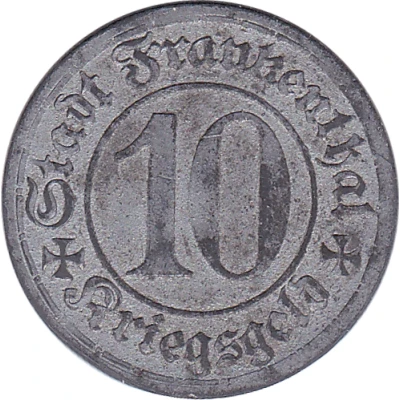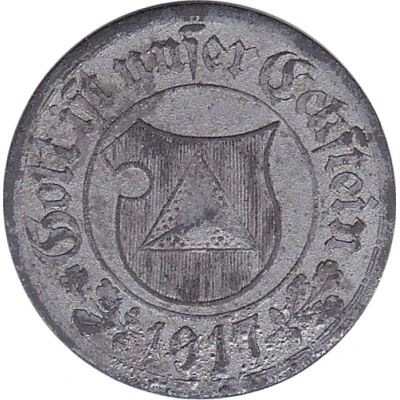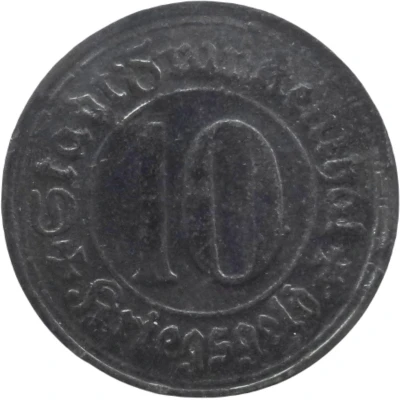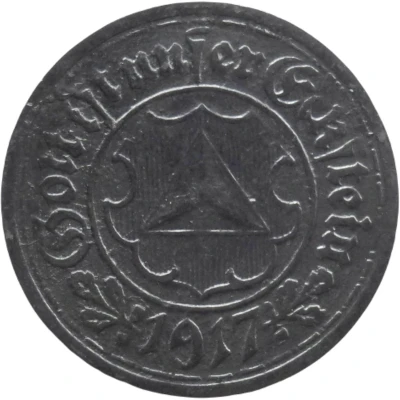


10 Pfennigs - Frankenthal
1917 year| Zinc | 2.1 g | 21.0 mm |
| Issuer | City of Frankenthal (Palatinate) (Federal state of Bavaria) |
|---|---|
| Emperor | William II (Wilhelm II) (1888-1918) |
| Type | Standard circulation coin |
| Year | 1917 |
| Value | 10 Pfennigs (10 Pfennige) (0.10) |
| Currency | Mark (1914-1924) |
| Composition | Zinc |
| Weight | 2.1 g |
| Diameter | 21.0 mm |
| Thickness | 1.0 mm |
| Shape | Round |
| Technique | Milled |
| Orientation | Medal alignment ↑↑ |
| Demonetized | Yes |
| Updated | 2024-10-04 |
| Numista | N#100083 |
|---|---|
| Rarity index | 76% |
Reverse
Solid line rim, legend surrounding closed circle, coat of arms centered.
Script: Latin (Fraktur blackletter)
Lettering:
Gott ist unser Eckstein
1917
Lettering (regular font):
Gott ist unser Eckstein
1917
Edge
Plain
Comment
Issuing authority: [Stadt, Pfalz]Interesting fact
The 10 Pfennigs coin from Frankenthal (Palatinate) in Bavaria, Germany, issued in 1917, is interesting because it was made of zinc, a material that was commonly used for coins during World War I due to its low cost and durability. This coin, weighing 2.1 grams, was a standard circulation coin and was used in everyday transactions during that time. Despite its small denomination, it remains a valuable collector's item for numismatists today.
Price
| Date | Mintage | VG | F | VF | XF | AU | UNC |
|---|---|---|---|---|---|---|---|
| 1917 | - | - | - | - | - | - |
Values in the table are based on evaluations by sales realized on Internet platforms. They serve as an indication only for 10 Pfennigs - Frankenthal 1917 coin.



